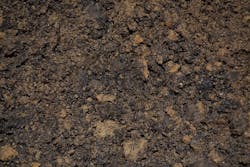Geotextiles & Soil Separation
Uses and applications for geotextile fabrics, commonly used in soil separation and load-support applications, have evolved rapidly over a relatively short period of time; the product group as we know it today has a history that can be traced back just 50 to 60 years. This accelerated growth is a testament to the group’s effectiveness.
What is the purpose of geotextile soil separation fabric?
Operating on a set of timeless principles involving soil characteristics and the interaction between soil and water, modern geotextile separation fabric technology provides a solid set of tools for road builders and land developers everywhere:
Nonwoven geotextiles. These are probably the most commonly known geotextiles. Nonwoven polypropylene fabric, which has a felt-like consistency, combines strength and flow ability. Available in varying weights and thicknesses, the fabrics are strong but permeable, allowing for varied uses. Nonwoven fabrics commonly are used as a separator between subsoils and rock riprap, and they also are used to separate soils and sized stone in many ground-level and subsurface drainage applications.
Woven geotextiles. Woven geotextiles are made from polypropylene as well, but the manufacturing process, product characteristics and applications differ dramatically from those of nonwovens. Narrow strands of polypropylene tape are woven together during manufacturing, producing a tough fabric, but one with much less permeability than nonwovens. Commonly known as ground stabilization fabric, wovens are effective in separating less desirable subsoils from gravel or paved surfaces. By effectively bridging over poorer-quality soils, they can provide savings in material costs and project life cycles.
Perhaps the easiest way to understand the value of soil separation in roadway construction is to be aware that stone and gravel tend to sink into softer soils. A simple adage that road builders have used for years goes something like this: “Five pounds of stone on top of five pounds of mud equals ten pounds of mud.”
Woven monofilament geotextiles. This group adds a third dimension to the geotextile toolbox. In the manufacturing process, individual polypropylene filaments are woven together to form a fabric that resembles nylon screen cloth. Woven monofilaments are available with varying opening sizes to match up appropriately with site soil, and the result is a geotextile separation fabric fabric that combines excellent flow ability with durability and strength.
RELATED: U.S. Army Corps of Engineers Uses Turf Reinforcement Mat to Rebuild New Orleans Levees
Uses for woven monofilaments are many and varied. They often are implemented in specialized applications where permeability is important, such as in drainage swale sides and bottoms. More recently, these geotextiles have been used in the construction of filter bags used to protect storm water inlet structures from construction site sediment.
Spun-bonded geotextiles. Rugged, nonwoven fabrics appropriate for many applications, particularly in landscape construction, spun-bound geotextiles are used by landscapers to separate subsoils from surface stone or mulch. Like wovens and nonwovens, spun-bonded geotextiles are used extensively in construction applications.
Final selection and application of geotextile fabric is in the hands of owners, designers and builders. John Lostumbo, a technical service representative for geotextile fabric producer TenCate Mirafi, has said: “The big difference today is that a tremendous amount of research is being done to effectively solve common site stabilization problems. Just a few decades ago, we relied on just a handful of products.”
Download: Here


